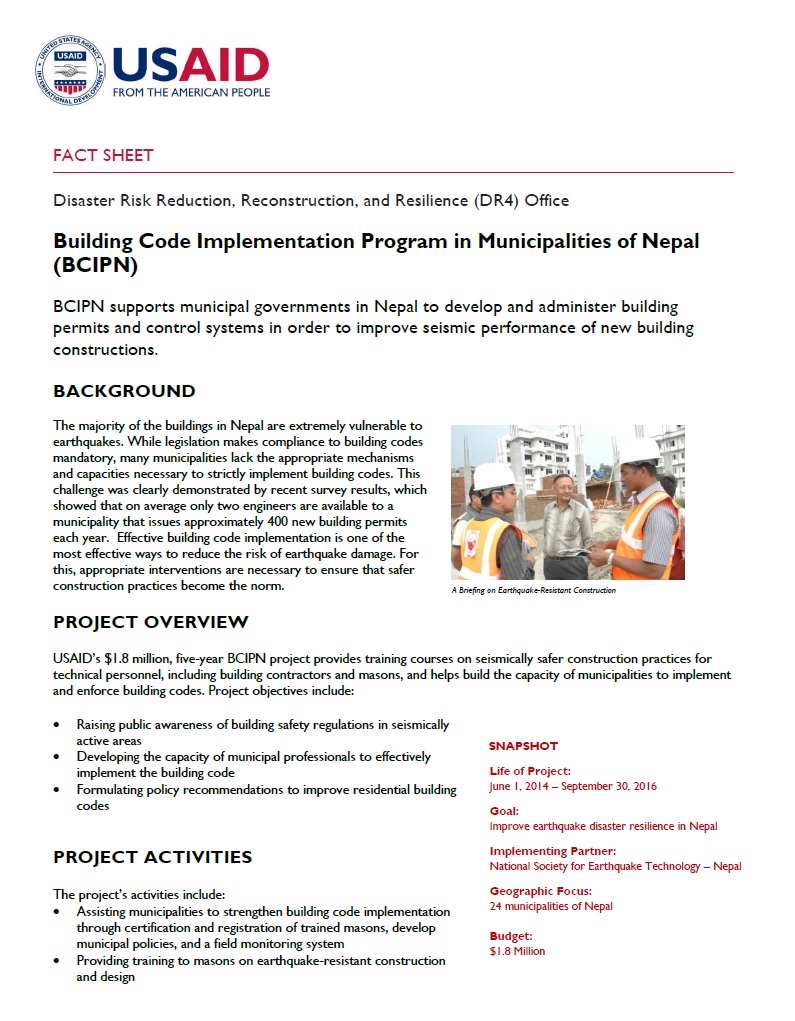BACKGROUND
The majority of the buildings in Nepal are extremely vulnerable to earthquakes. While legislation makes compliance to building codes mandatory, many municipalities lack the appropriate mechanisms and capacities necessary to strictly implement building codes. This challenge was clearly demonstrated by recent survey results, which showed that on average only two engineers are available to a municipality that issues approximately 400 new building permits each year. Effective building code implementation is one of the most effective ways to reduce the risk of earthquake damage. For this, appropriate interventions are necessary to ensure that safer construction practices become the norm.
PROJECT OVERVIEW
USAID’s $1.8 million, five-year BCIPN project provides training courses on seismically safer construction practices for technical personnel, including building contractors and masons, and helps build the capacity of municipalities to implement and enforce building codes. Project objectives include:
- Raising public awareness of building safety regulations in seismically active areas
- Developing the capacity of municipal professionals to effectively implement the building code
- Formulating policy recommendations to improve residential building codes
PROJECT ACTIVITIES
The project’s activities include:
- Assisting municipalities to strengthen building code implementation through certification and registration of trained masons, develop municipal policies, and a field monitoring system
- Providing training to masons on earthquake-resistant construction and design
- Conducting building code orientation programs for homeowners
- Preparing action plans for risk management in post-earthquake scenarios
- Conducting exposure visits for municipal officials to other municipalities
- Organizing workshops to share lessons learned from earthquake-resistant construction practices
RESULTS ACHIEVED
- 814 engineers and junior engineers trained in earthquake-resistant construction
- 2,548 masons trained in earthquake-resistant construction
- More than 12,836 individuals have participated in earthquake awareness and orientation programs
- 25,000 houses have incorporated hazard mitigation measures
- Approximately 150,000 people now living in earthquake-resistant buildings
- 20 municipalities with building code implementation systems established








Comment
Make a general inquiry or suggest an improvement.